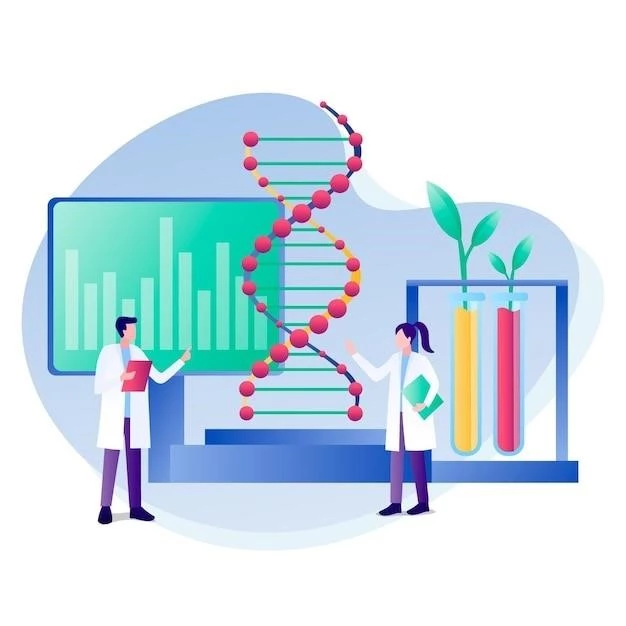Learn about Chromosome 14q Proximal Duplication, its symptoms, genetic causes, treatment options, diagnosis, prognosis, research advances, and available support resources in this comprehensive guide.
Definition and Overview
Chromosome 14q Proximal Duplication refers to a genetic condition where there is an extra copy of genetic material on the long arm (q) of chromosome 14. This duplication can vary in size and can lead to a range of physical, developmental, and intellectual challenges.
Individuals with this duplication may experience symptoms such as developmental delays, intellectual disability, speech and language delays, feeding difficulties, growth delays, and distinctive facial features. Additionally, they may have behavioral challenges and be at an increased risk for certain medical conditions.
The genetic causes of Chromosome 14q Proximal Duplication typically involve a random error during the formation of reproductive cells or early fetal development. In some cases, the duplication may be inherited from a parent who carries a balanced translocation involving chromosome 14.
Diagnosis of this condition is often done through genetic testing, which can identify the duplication on chromosome 14q. Treatment plans are usually multidisciplinary, involving therapies to address developmental delays, educational support, and management of associated medical concerns.
Research in this area is ongoing, focusing on understanding the specific effects of the duplication, identifying potential therapeutic interventions, and improving diagnostic techniques. Support groups and resources are available to provide guidance, information, and emotional support to individuals and families affected by Chromosome 14q Proximal Duplication.
Symptoms of Chromosome 14q Proximal Duplication
Individuals with Chromosome 14q Proximal Duplication may exhibit a variety of symptoms. These can include developmental delays, intellectual disability, speech and language delays, feeding difficulties, growth delays, and distinctive facial features such as a broad forehead, deep-set eyes, and a small bridge of the nose.
Behavioral challenges like attention deficit hyperactivity disorder (ADHD), autism spectrum disorder, anxiety, and aggression may also be present. Some individuals may experience seizures, vision or hearing impairments, heart defects, kidney abnormalities, and skeletal issues like scoliosis.
There can be variations in the severity and combination of symptoms among individuals with this duplication. Early intervention and a comprehensive care plan involving specialists such as developmental pediatricians, geneticists, speech therapists, occupational therapists, and psychologists can help manage these symptoms and improve the quality of life for affected individuals.
Genetic Causes of Chromosome 14q Proximal Duplication
Chromosome 14q Proximal Duplication is typically caused by the presence of an extra segment of genetic material on the long arm (q) of chromosome 14. This additional genetic material can result from various genetic mechanisms٫ including non-allelic homologous recombination or unequal crossing over during meiosis٫ leading to an extra copy of genes in the duplicated region.
In some cases, the duplication may be inherited from a parent who carries a balanced translocation involving chromosome 14, where part of chromosome 14 is exchanged with another chromosome. This balanced translocation may not cause any health issues for the parent but can lead to the duplication in their offspring.
Spontaneous (de novo) duplications can also occur during early fetal development, where errors in cell division cause the extra genetic material to be duplicated on chromosome 14q. These de novo duplications are usually not inherited from parents and are unique to the affected individual.
Understanding the genetic causes of Chromosome 14q Proximal Duplication is crucial for accurate diagnosis, genetic counseling, and potential future advancements in treatment options targeting the underlying genetic mechanisms involved in this condition.
Treatment Options for Chromosome 14q Proximal Duplication
Management of Chromosome 14q Proximal Duplication involves a multidisciplinary approach aiming to address the diverse symptoms and challenges presented by affected individuals. Treatment plans are tailored to the specific needs of each person and may include early intervention services, educational support, and therapies targeting developmental delays.
For developmental delays and intellectual disability, interventions like speech therapy, occupational therapy, physical therapy, and behavioral therapy can help improve communication skills, motor function, and behavior management. Special education programs and individualized education plans (IEPs) can support learning and academic progress.
Medical treatment may be required to address associated health issues like seizure disorders, heart defects, or vision problems. Regular monitoring by healthcare professionals and specialists can help ensure early detection and management of any emerging medical concerns.
Families and caregivers play a crucial role in the treatment process, providing emotional support, advocating for their loved ones, and actively participating in care coordination. By working closely with healthcare providers and specialists, individuals with Chromosome 14q Proximal Duplication can receive comprehensive care that enhances their quality of life and maximizes their potential.
Prognosis and Outlook for Chromosome 14q Proximal Duplication
The prognosis for individuals with Chromosome 14q Proximal Duplication can vary depending on the specific symptoms and severity of the condition. Due to the wide range of potential challenges associated with this genetic disorder, a comprehensive care plan tailored to the individual’s needs is crucial for improving outcomes and quality of life.
Early intervention and ongoing support services, including educational programs and therapies, can positively impact developmental progress and functional abilities. With the appropriate interventions and support, individuals with this condition can achieve important developmental milestones and improve their overall well-being.
Medical management of associated health issues, such as seizures or heart abnormalities, also plays a significant role in the long-term outlook for affected individuals. Regular monitoring by healthcare professionals and coordination of care between specialists can help address medical concerns as they arise and contribute to a more positive prognosis.
Research into Chromosome 14q Proximal Duplication continues to advance our understanding of the condition, potentially leading to new treatment strategies and improved outcomes in the future. By staying informed about the latest research findings and accessing available support networks, individuals and families affected by this genetic disorder can navigate challenges with resilience and hope for the future.
Diagnosis of Chromosome 14q Proximal Duplication
Diagnosing Chromosome 14q Proximal Duplication typically involves genetic testing to identify the specific duplication on chromosome 14q. Various testing methods can be utilized, including chromosomal microarray analysis (CMA) and fluorescence in situ hybridization (FISH), which can detect the extra genetic material on chromosome 14.
Initial evaluation may involve a thorough physical exam to assess for characteristic features associated with the duplication, such as facial anomalies or growth delays. Developmental assessments and genetic consultations are often part of the diagnostic process to evaluate developmental milestones and discuss the implications of the genetic findings.
Genetic counseling is essential for individuals and families receiving a diagnosis of Chromosome 14q Proximal Duplication. Genetic counselors can provide information about the inheritance pattern, recurrence risks, and available testing options for family members. Understanding the genetic basis of the condition can guide future family planning decisions and inform potential prenatal testing options.

Early and accurate diagnosis of Chromosome 14q Proximal Duplication is crucial for initiating appropriate interventions and support services promptly. By working closely with a healthcare team experienced in genetic disorders, individuals and families can receive the necessary guidance and care to manage the complexities associated with this genetic condition.
Research Advances in Chromosome 14q Proximal Duplication
Ongoing research in the field of Chromosome 14q Proximal Duplication is focused on deepening our understanding of the genetic and molecular mechanisms underlying this condition. Scientists are working to identify the specific genes within the duplicated region of chromosome 14q and how their overexpression contributes to the observed symptoms.
Advancements in genetic technologies and research methodologies have enabled researchers to explore potential targeted therapies that aim to modulate gene expression or address specific molecular pathways affected by the duplication. These innovative approaches hold promise for developing more personalized treatment strategies for individuals with this genetic disorder.
Collaborative efforts among clinicians, researchers, and advocacy groups have led to the establishment of patient registries and research networks dedicated to studying Chromosome 14q Proximal Duplication. By pooling resources and sharing data, the scientific community can accelerate the pace of discovery and improve outcomes for those affected by this rare genetic condition.
Additionally, research initiatives are exploring the neurodevelopmental aspects of the condition, investigating how the duplicated genetic material impacts brain development and function. Insights gained from these studies may lead to novel therapeutic targets and interventions aimed at supporting cognitive and behavioral development in individuals with Chromosome 14q Proximal Duplication.
Support and Resources for Chromosome 14q Proximal Duplication
Individuals and families impacted by Chromosome 14q Proximal Duplication can benefit from a range of supportive resources and organizations dedicated to providing information, guidance, and emotional support.
Support groups offer a valuable platform for connecting with others who understand the challenges of living with this genetic condition. These groups provide opportunities for sharing experiences, exchanging coping strategies, and fostering a sense of community among individuals affected by Chromosome 14q Proximal Duplication.
Genetic counseling services play a vital role in helping individuals and families navigate the complexities of genetic testing, inheritance patterns, and family planning considerations. Genetic counselors provide personalized information and support to guide informed decision-making.
Online resources, such as informational websites, forums, and social media groups, offer access to up-to-date information on the latest research developments, treatment options, and community events relevant to Chromosome 14q Proximal Duplication. These resources can empower individuals to stay informed and connected.
Collaboration with healthcare providers, including geneticists, developmental pediatricians, therapists, and special education professionals, is essential for accessing comprehensive care and treatment services. Establishing a supportive network of healthcare professionals can ensure that individuals with Chromosome 14q Proximal Duplication receive coordinated and holistic care tailored to their unique needs.
